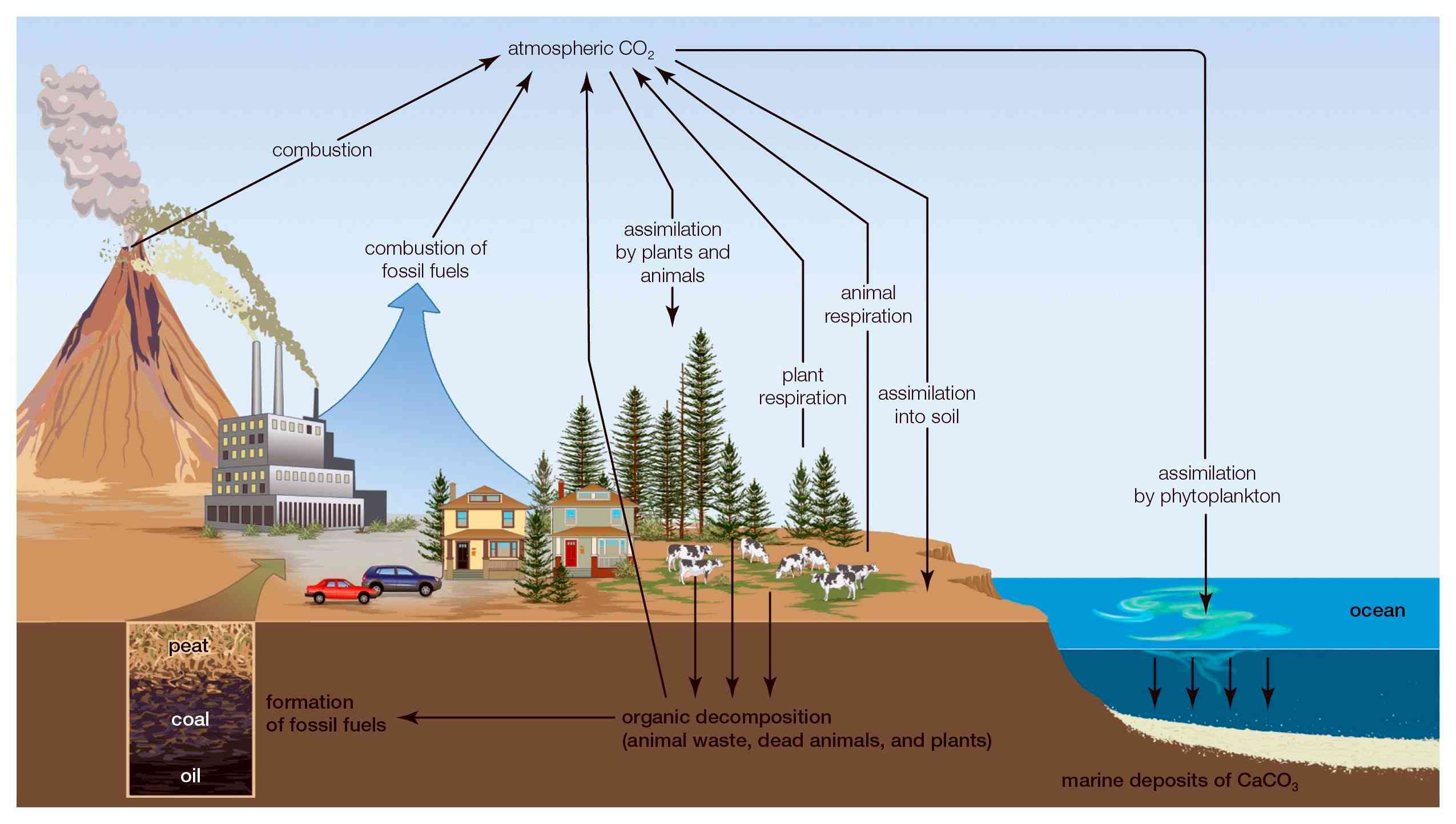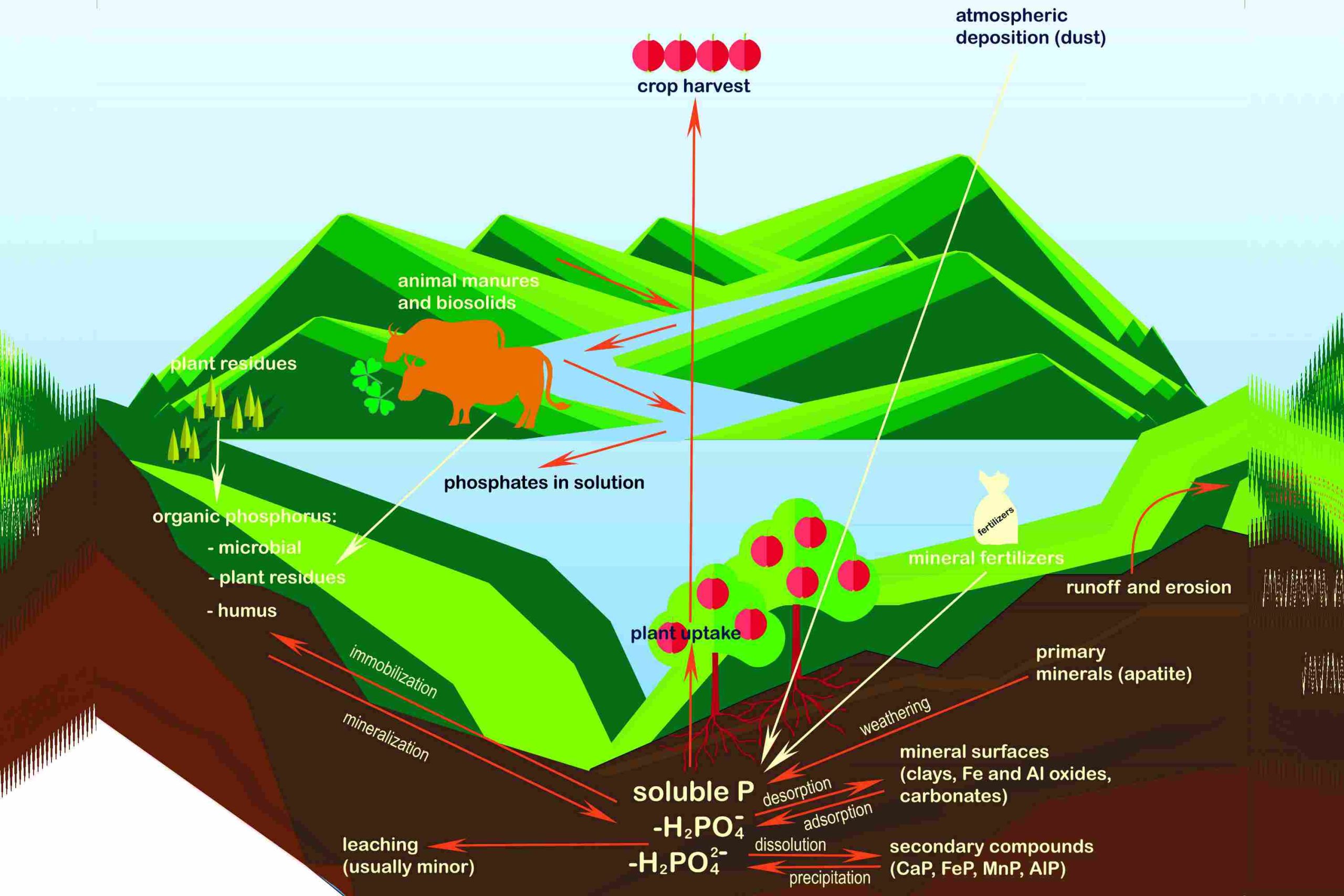Nutrient cycling is an important process that happens in any ecosystem. The nutrient cycle describes the movement, use, and nutrient recycling in the environment. Valuable elements which are vital to life must be recycled for organisms to exist and survive. These valuable elements are carbon, phosphorous, hydrogen, nitrogen and oxygen. These cycles include both living and non-living components where biological, chemical and geological processes are involved. Nutrients cycles are therefore also called biogeochemical cycles.
Biogeochemical cycles are divided into main types; global cycles and local cycles. Nitrogen, carbon, hydrogen and oxygen are recycled through abiotic environments that include soil, water and the atmosphere. Their cycles are globalsince the atmosphere is the main abiotic environment from which they are harvested. They may travel a long distance before being taken up by organisms. Elements such as phosphorus, potassium and calcium are recycled by the soil as the main abiotic environment. Hence their movement is over a local region.
Types of Nutrient Cycles.
Carbon cycle.
Carbon is vital to all forms of life, being the main constituent of living things. This is because carbon acts the main component for organic polymers such as proteins, lipids and carbohydrates. The constant circulation of carbon compounds like carbon dioxide and methane in the atmosphere influence global climate.

Through processes of photosynthesis and respiration, carbon is circulated between living and non-living components of an ecosystem. Photosynthetic organisms obtain carbon dioxide and use it to manufacture biological materials. This carbon dioxide is returned to the environment through respiration when consumed by plants, animals and decomposers. A fast carbon cycle is the movement of CO2 through biotic components of the environment. It is fast because the movement of CO2 in biotic components takesa considerably short time, unlike the movement in abiotic components. Movement of CO2 through abiotic factors is called the slow carbon cycle.
Steps of the carbon cycle.
- Removal of CO2 from the atmosphere by photosynthetic organisms which is used in the generation of organic molecules and building of biological mass.
- Consumption of photosynthetic organisms to acquire carbon stored within them.
- Through respiration, carbon is returned in the atmosphere.
- Decomposition of dead and decaying organic matter to release CO2.
- Returning of CO2 into the atmosphere via burning organic materials.
- Trapped CO2 in rocks and fossil fuels returns to the atmosphere through erosion, volcanic eruption etc.
Phosphorous cycle.
Phosphorous is an element of biological molecules and adenosine triphosphate (ATP). Through the processes of cellular respiration and fermentation, ATP is produced.

Phosphorous is mainly circulated through rocks, water, soil and living organisms. The original form of phosphorous is the phosphate ion (PO43-). Through runoff resulting from rocks containing PO43-, phosphorous is added to soil and water, which is absorbed from the soil by plants later consumed by animals hence circulating it. Through decomposition, phosphates are added back to the soil.
Importance of nutrient cycles.
- Transfer of matter from one form to another.
- Element transfer from one area to another.
- Proper functioning of ecosystems.
- Storage of elements.
- Linkage of living and non-living things.
- Regulation of the flow of substances.